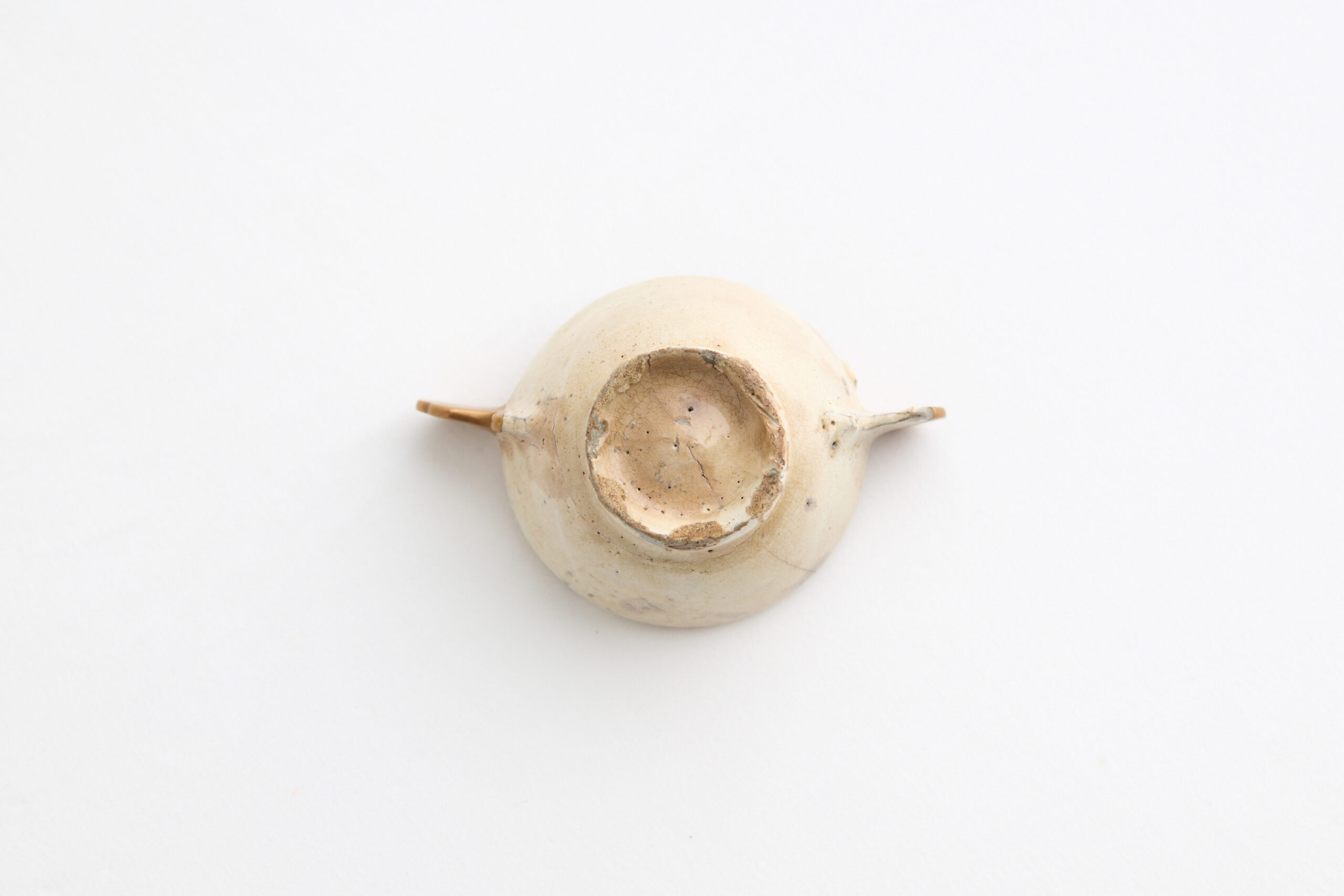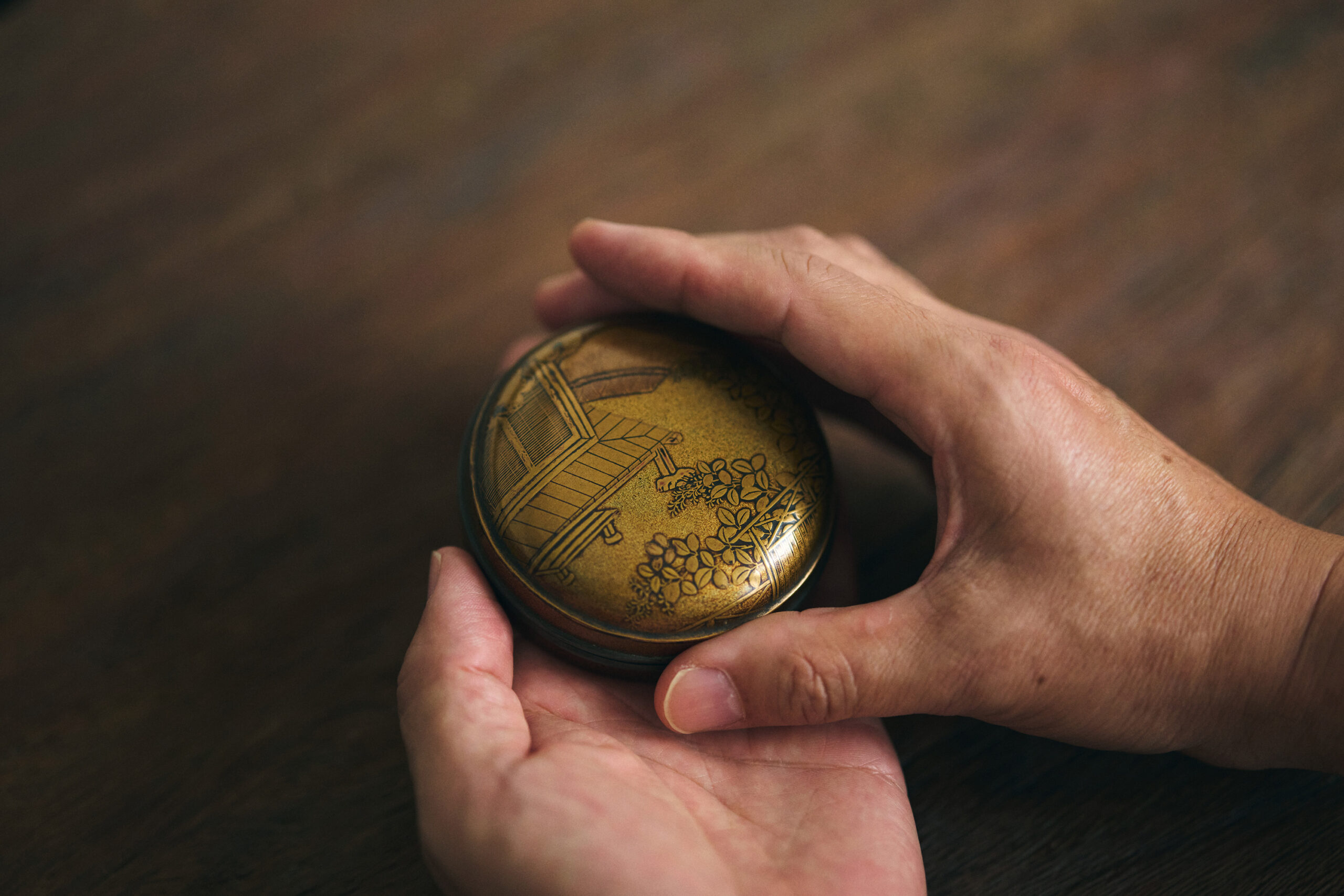
The lid, which is typical of the Muromachi period, features a flat lacquer design depicting an unseen Kogō playing the koto. The scene unfolds against a matte background, evoking a very Japanese and tranquil feeling. The body of the incense container is in excellent condition, with no touch-ups or repairs. Even the easily damaged tin joint is original. This is an suberb example of a tin-rimmed lacquer incense container. The atmosphere of the Full Moon Festival has been distilled into this small vessel.
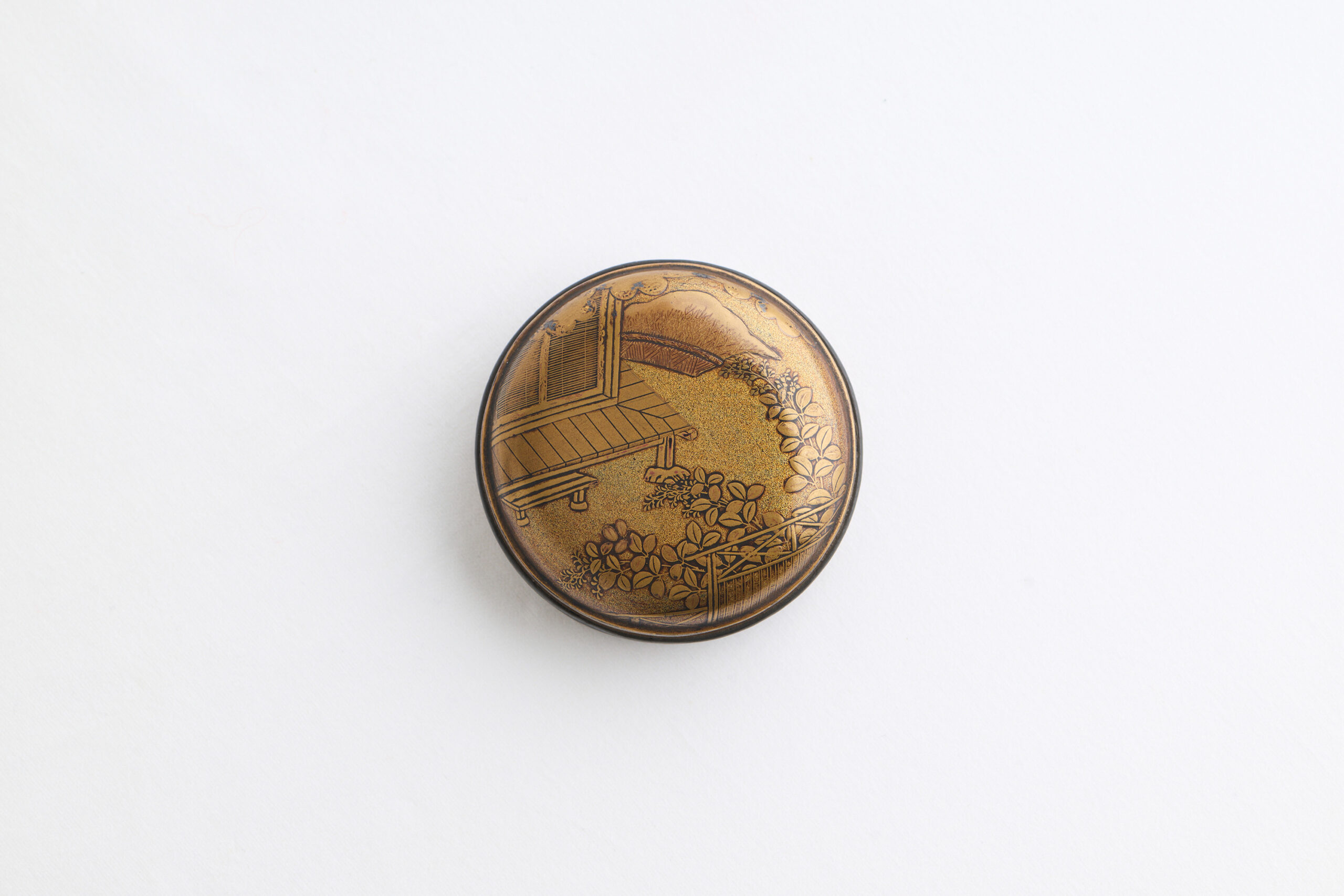
(*1)
Synopsis of Kogō no Tsubone
During the Heian period, when the Taira clan held great power, Kogō no Tsubone was favored by Emperor Takakura. However, fearing the power of Taira no Kiyomori, the father of Emperor Takakura’s wife, she went into hiding in Sagano.
Takakura In (Emperor)grieved morning and night, worrying about Kogō no Tsubone’s whereabouts, but when he heard that Kogō had retired to Sagano, he ordered his subordinate Minamoto no Nakakuni to search for her.
The day happened to be the fifteenth night of the eighth month on the lunar calendar. Believing that Kogō would be drawn by the bright moon on the fifteenth night to play the koto, Nakakuni rode his horse around Sagano, where he heard a koto near Hōrin-ji Temple. The song being played was “Omofu Koi,” a song played in reminiscence. Nakakuni had often played the flute to accompany Kogō’s koto at the Imperial Court and was able to distinguish the tone of her koto, so he was convinced that this was Kogō’s koto and asked to be led to her house.
When Kogō finally met Nakakuni, she had mixed feelings, but after expressing her gratitude to Emperor Takakura for taking the trouble to come looking for her, she entrusted Nakakuni with a letter to be sent to the Emperor, and sent him back to the capital.
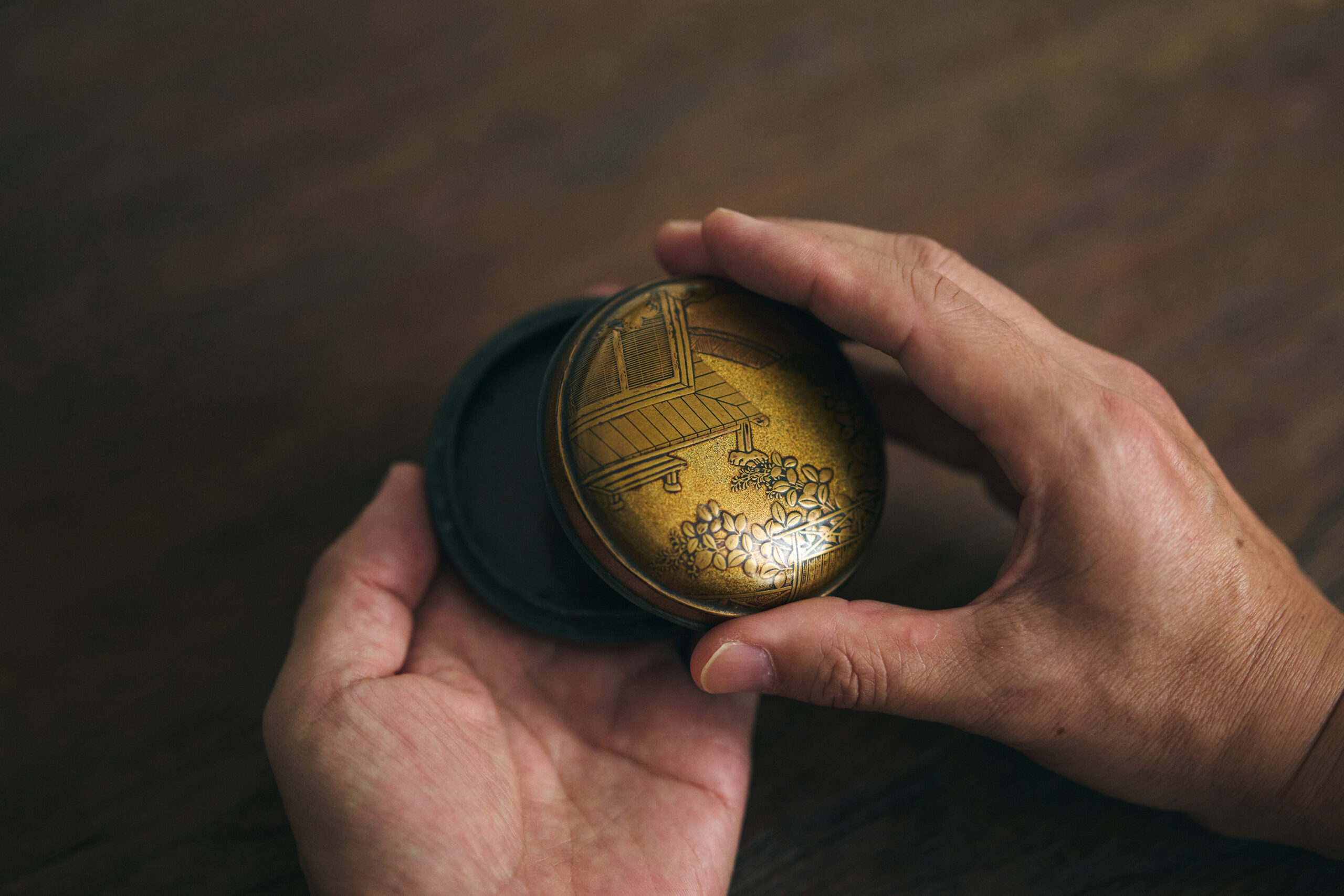
This is a Kohiki (*1) or “ear cup” from Hōjō (currently the Boseong region in Korea). Originally a ritual vessel, both ears are chipped and repaired with gold, but what really catches the eye is its size. While most ear cups normally have a diameter of over 10 cm, this one is just 6.5 cm, making it ideal for a sake cup. Another highlight is the impressive, almost disproportionately large base compared to its size.
The soft white color indicative of Hōjō Kohiki has changed to brown and pink, showing the extent to which it has been cherished and lovingly held in the hands of a connoisseur for many years and has absorbed plenty of sake. Time spent sipping a drink while enjoying the soft, creamy texture of the cup is an incomparable pleasure.
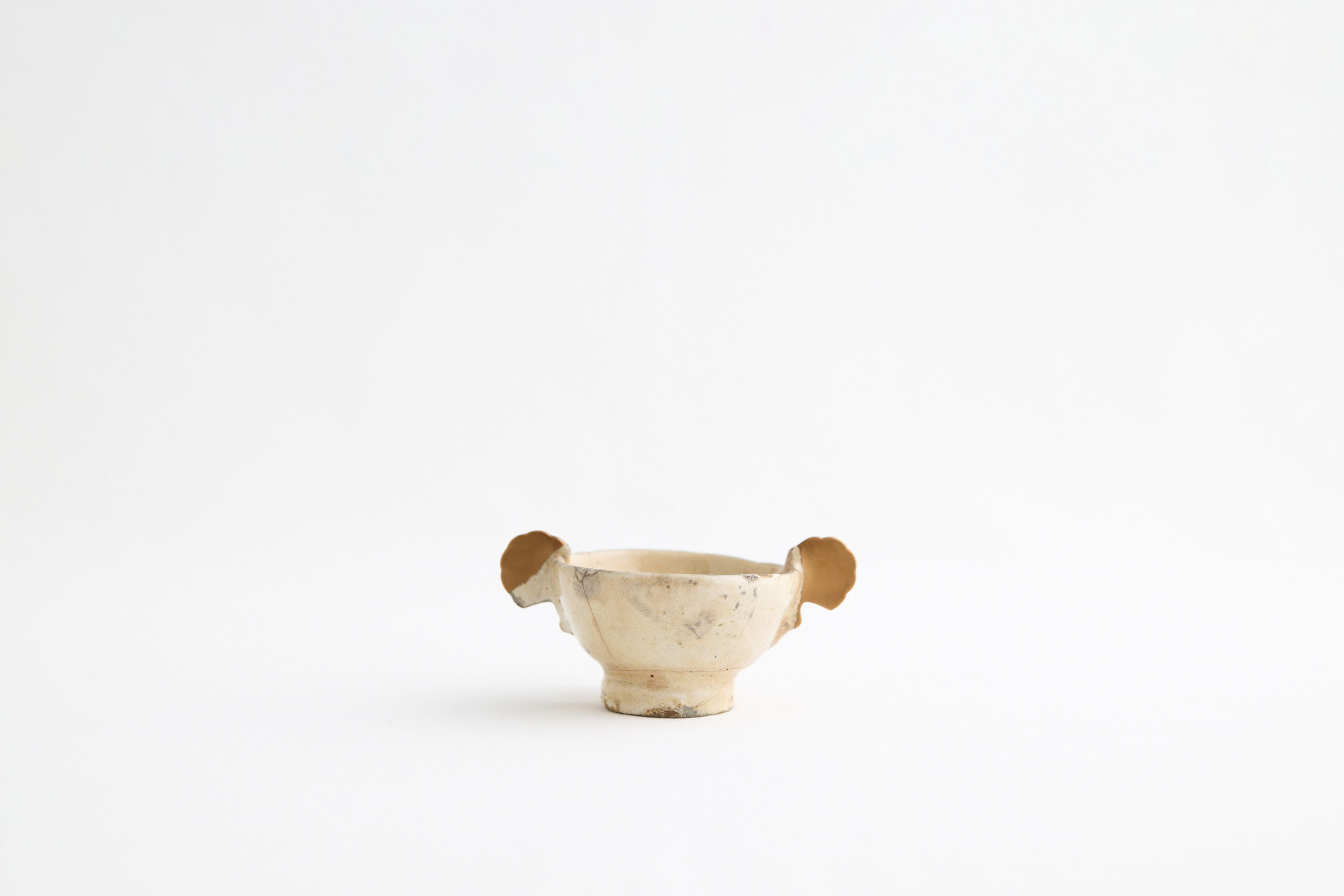
(*1)
The Kohiki technique was perfected through a “yearning for white.” Around the 15th century, commoners were not permitted to use white porcelain, the luxury tableware reserved for imperial dynasties and government officials. Thus, Kohiki was the result of earnest efforts to somehow create white tableware using black clay (the leading theory is that it was inspired by the Cizhou kiln in China).
At the time, high-quality kaolin (pottery stone) was available in the area around Hadong County in the southern part of the Korean Peninsula. Pottery was turned on a wheel, dipped in elutriated kaolin, dried in the sun, and then coated with ash glaze before being fired to create Kohiki pottery.
Kohiki was well received at first, but with each use, moisture and oil permeated and stained it. As such, it was disliked by the people of the Korean Peninsula, who initially appreciated its pure white color, and it ended up being short-lived. However, as we well know, Japanese tea masters found the stains on Kohiki to be representative of “wabi” (a Japanese aesthetic of simplicity) and were pleased with it. The famous tea bowls “Sohaku,” “Miyoshi,” and “Tsuda” are all produced in Hōjō.
